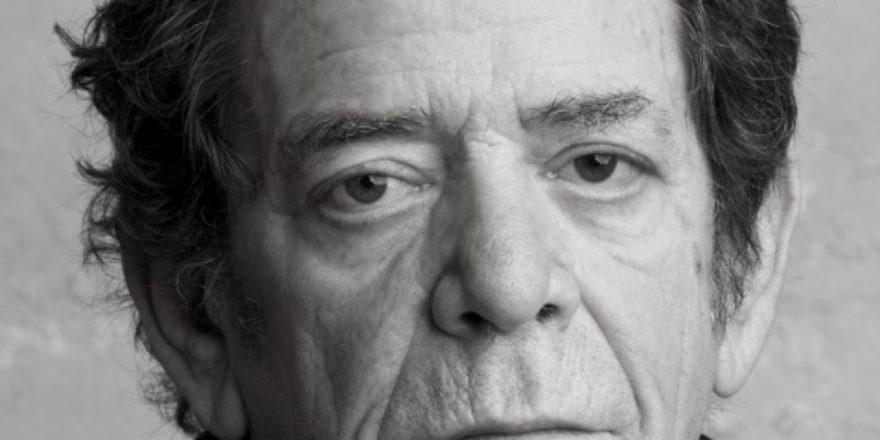On February 7, 1964, the Beatles’ plane arrived at the newly named John F. Kennedy International Airport, the beginning of a six-year run that soundtracked an era of American experimentation—with drugs, with protest, with ideas about gender, race, and national identity.
But the idea of “arrival,” at least when it comes to music and popular culture, means something entirely different than it did 50 years ago. Arrival, meaning that a certain artist does not exist in one place because he or she belongs to another, and then enters the new place and stirs up great surprise, is yet another casualty of the new ways in which we consume popular culture. Although she comes from New Zealand, nobody is talking about Lorde’s arrival in America. No one is going to remember when or where her plane first touched down. Lorde is simply here.
Lorde is here, as all things are in the digital age. We live in a time when everything is always, and so nothing is ever entirely new. Online, an artist instantly belongs to everyone. From Twitter to Facebook to SoundCloud, our artists are downloadable, accessible, always available. Our music and the musicians who create it live in a kind of virtual reality. They do not belong to any particular location, nor do they belong to any particular time. On the internet, all periods of history are happening now. The identities of today’s artists are not fixed, but fluid. Artists exist on every computer screen and mobile device and tablet. When we power up the internet, we activate Lorde. It is love at first byte.
I still remember the moment when the Beatles first “arrived” for me. The year was 1993. It was decades after Beatlemania; John Lennon was long gone. I was just a little kid — eight or so — and I’d stolen Help! from my older sister’s room. I didn’t understand why the men on the front cover were wearing funny blue capes or why they were doing those odd gymnastics moves with their arms. (I didn’t realize they were spelling out the word “Help.”) Those guys looked more than a little strange. Nevertheless, I had heard that the Beatles were famous, so I thought I might as well give the CD a spin. It turned out that the cheery melodies, perfectly orchestrated harmonies, and enthusiastic bounce of the music were perfect for an eight-year-old’s sense of what sounds good. Of course, I skipped a few of the songs with adult themes. I didn’t know what “I Need You” meant and didn’t understand the song’s emotional register either. “Dizzy Miss Lizzy” was similar — “You make me dizzy, Miss Lizzy/The way you do the stroll.” What, I wondered, was the stroll, and why would watching Miss Lizzy do it make anyone dizzy? Still, the “nah nah nah” playground chant of “You’re Going to Lose That Girl” was age-appropriate, as was the ever-poignant “Yesterday,” the sadness of which transcended all I did not yet know about losing anyone. I’d found my ticket to ride, and I was hooked.
My older sister often played Sgt. Pepper’s Lonely Hearts Club Band in her room, and I amused myself by making up stories about the strange, colorful figures on the cover. I tried in vain to invent a logical explanation for why they had all ended up there, in such neat, orderly rows, together. I tried to figure out why the intricately orchestrated psychedelia that was the auditory domain of these bizarre characters sounded so mysteriously unlike all other songs I’d ever heard. I got down with the big, brassy “Sgt. Pepper’s Lonely Hearts Club Band,” but puzzled over “Lucy in the Sky with Diamonds.” In what world did tangerine trees, marmalade skies, a girl with kaleidoscope eyes, and the eerie, nasal, not here quality of the voice that sung about her all belong? My incomprehension of the vivid, dark imagination of the Beatles was just like any child’s inability to understand; it was a way in which I learned to accept the inventive power of my own imagination. Because I did see something when I listened to the music. How could anyone not? The newspaper taxis were just waiting to take you away. I had my head in the clouds. In my mind’s eye, the psychedelic images rose up brightly from the river of the music. The images were vivid although I knew they were not real. They were vivid because they were not real.
When I rediscovered the Beatles at the age of 17, my experience of listening to them had very little to do with an eight-year-old girl’s implicit connection to simple pop music. Here is how I re-discovered the Beatles: After our U.S. History class took the A.P. History test, there was still a month left of school, and our teacher, being young and cool, told the class that we could work on a group project about anything we wanted, as long as it had to do with American history. My good friend and I chose to do our project on the Beatles.
My friend had some Beatles CDs, and I spent nearly every day after school at her house, listening to them. We were almost seniors. We changed into spaghetti-strap tank tops after school and dyed our hair red in the bathroom. My butt stuck to the fake leather seat of the chair in front of her early-2000’s Microsoft laptop — probably the first laptop I’d seen. I couldn’t figure out how to use the trackpad.
Most days, my friend and I didn’t type up anything, although we were supposed to be presenting our project soon. We just listened to our first collection of MP3s. The room grew dark, but we didn’t turn on the lights. “The Beatles are so good,” she would say occasionally, and I never knew what to say back. I didn’t actually know how to talk about the music I liked yet, and so I just nodded and put on another MP3. After ordering pizza, we’d bring her CDs downstairs to the living room to listen to them on the big speakers.
Around midnight, I’d drive home in my parents’ green Ford station wagon and I’d feel the cool air come in the window as I listened to a tape I’d made of my favorite Beatles songs. I imagined, then, that I was not in the year 2002 at all, but rather somewhere timeless, in some weird, liminal space outside the bounds of time. In listening to the music, I was experiencing the history of something, and this was a very private experience, although I thought my friend might also be sharing it. This was the first time I knew the world that had gone away could be mine. In that way, the world suddenly seemed a whole lot bigger than it had been before. Music could do that to me, and always has been able to do that to me — to make me feel small, but going somewhere, even if it is simply to be swept away for a few seconds in the current of time.
In the week before my history project was due, I decided to conduct a series of interviews with my parents’ ex-hippie friends, as I’d barely done any research and needed something to talk about in my presentation. So I drove all around town and tape-recorded conversations with aging baby boomers. Some still had long hair and some didn’t. Some admitted to smoking pot, and some just said, when I asked them what they used to do while listening to the Beatles, “We’d sit around and, uh, you know…” It was astonishing to me, this realization that my parents and their friends in their neatly-painted suburban homes had once been young, pot-smoking teenagers who loved to listen to records. They’d been young people who had felt a sense of possibility that I sometimes, but only rarely, did.
That was what everyone said — all those aging hippies who had seen the dreams of the ’60s overshadowed by the darker ’70s and then by the almost soul-crushing years of the Reagan administration. Together, all of my many interviews added up to the same sentence: “When we listened to the Beatles, we always felt a sense of possibility.” I wondered if the hope my parents and their friends had felt when they were young was the same hope I had for my own future, or if the hope of the baby boomers belonged to another time.
I lived in a different world from my parents, a world where I saw the twin towers fall from the window of my high school. No one was talking about revolution. Everyone was afraid. Things were different, and although back then I couldn’t have told you exactly how, I knew that the hope my parents had once had would not, and could not, be mine. Certain feelings belong to particular times, and such feelings cannot be recaptured, however many repeat performances we ask from the remaining two Beatles, and however many star-studded tribute bands try to recapture the original spark.
In the end, I presented two poster-sized collages to my history class. One of the collages suggested that the Beatles captured the youthful idealism of the ’60s. It contained images of anti-war protests and sit-ins and rainbow-colored daisies and the lyrics to the song “Imagine.” (I must have thought it was a Beatles song and not a solo John Lennon song.) The second poster theorized that the commodification of the Beatles showed the way in which the hope and freedom of the ’60s would be co-opted and sold back to its youth in the form of empty, alienating commodities. For this poster, I meticulously cut out pictures of Beatles lunchboxes, Beatles dolls, Beatles wigs, et cetera. I could not decide which poster offered the more accurate version of the Beatles story, and so I decided to say that both posters were equally valid expressions of what the Beatles meant in the ’60s, and what they have come to mean to us.
Listening is an act of silence, and to listen to music is to become it, however briefly the moment lasts. In that way, the Beatles are always arriving for someone, somewhere, all the time. While what the Beatles were and what they meant may belong to the vanished dreams of the ’60s, the Beatles are always new for the young person in the act of discovering them. Great songs are like that: However old they are, they always sound new.








